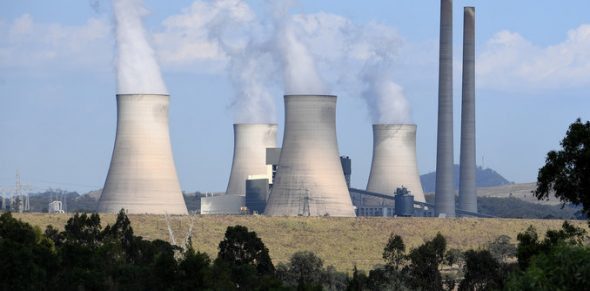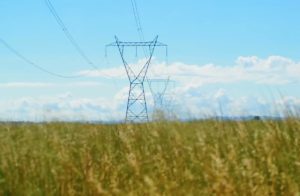A new analysis on the price jumps in the wholesale electricity market following the closure of the Hazelwood brown coal generator in 2017 has laid the blame squarely with the lack of competition in the market, and in particular the re-pricing of output by AGL at its two big NSW coal generators.
The study, led by Bruce Mountain and Stephen Percy at the Victoria Energy Policy Centre at Victoria University, estimates that coal generators pocketed an extra $3.5 billion from the wholesale market in the 12 months after the Hazelwood closure.
And nearly all of this came through to the big utilities that dominate the market as windfall profits, because the price rises did not reflect an increase in costs, as the company’s own profit and loss accounts have confirmed.
The study by Mountain’s team is just the latest to note that when Hazelwood closed, the pricing power shifted to the black coal generators in NSW, and the owners of these assets were ruthless in their exploitation of the market.
The windfall gains to all the major generators has been well noted, with AGL, Origin Energy, EnergyAustralia and the government-owned Snowy Hydro all delivering huge profit rises since the closure of Hazelwood.
The biggest losers have been the customers, who were hit by an average price jump of $200 in the annual cost of their home electricity. A price rise they could justifiably view as unnecessary, for all the talk from the big utilities on how “it’s all about the customer”. Perhaps, but in ways other than suggested.
The VEPC analysis looked at all the bidding positions, contracting and fuel costs in the lead up to and after the closure of Hazelwood.
“We conclude that the main factor explaining the price rises in the NEM (National Electricity Market) following the closure of Hazelwood is AGL’s exercise of market power at its Bayswater and Liddell power stations,” the report notes.
AGL has often protested its innocence, and like the other big gen-tailers that were only too happy to go along with the price spikes – rather than adding competition to the market – claimed that the re-pricing was driven by supply constraints.
The VEPC report, however, said it could find no evidence to justify such price spikes.
“Clearly AGL has been able to substantially pass higher wholesale costs through to its customers,” it notes.
And the study shows that AGL did not muck around when given the opportunity.
 “Immediately after the Hazelwood closure was announced, AGL withdrew about 500MW that it had previously offered to the market in the $40-$60/MWh, and only offered to make this capacity available at prices of more than $5,000 per MWh,” it says.
“Immediately after the Hazelwood closure was announced, AGL withdrew about 500MW that it had previously offered to the market in the $40-$60/MWh, and only offered to make this capacity available at prices of more than $5,000 per MWh,” it says.
It did the same with 400MW of capacity at Liddell.
AGL again re-priced capacity at Bayswater at the start of 2017, this time from the $20-$40/MWh to the $40-60/MWh bands. And AGL and the other generators (except Eraring) re-priced capacity upwards again about a month before Hazelwood closed, and Eraring followed suit when Hazelwood closed.
The higher prices continued into 2018, although the extent did reduce slightly.
This had little to do with available capacity, Mountain notes. As this graph shows there was little difference in spare capacity over the two years. If anything, there was more capacity available for much of the time.
“I don’t believe there was a genuine scarcity in the market. There was more than enough coal production capacity in NSW to meet their needs,” Mountain says.
As for the impact on emissions, it appears to be a two-edged sword. On one hand, the higher prices could stimulate more rapid expansion of wind and solar generation.
But on the other hand, the higher prices could stimulate investment to extend the life of the remaining coal generators on account of their higher profitability.
“It might also be argued that higher prices will undermine the transition to low emission generation since it makes the remaining coal-fired generators more valuable, and hence a firmer policy response (and greater expense) will be needed to achieve the objective of rapidly reducing greenhouse gas emissions from the electricity sector,” the study notes.
Mountain notes that through the history of the NEM, some element of the generation fleet has often held considerable market power, and used it to its advantage – this has occurred with gas generators in South Australia, and gas generation in Queensland, and hydro in Victoria and NSW.
This is the first time that the pressure has come from the bottom up, so to speak, when coal is setting prices.
Mountain says that the net effect of this was a doubling of the bidding price, from around $43/MWh to $88/MWh. Mountain argues that other generators needed to follow suit because they had no capacity to increase output. The only one that did was Origin’s Eraring Energy, which lifted output by 38 per cent.
An AGL spokesman said in an emailed statement that the wholesale energy market is regulated by the ACCC and AER, with both conducting recent lengthy reviews, which AGL has supported by providing thousands of documents.
“Specifically, in 2017, the AER conducted a market review into wholesale prices and requested information on the issues raised in this report. AGL fully complied with this request,” he said.
“Neither regulator has accused AGL of misusing market power, or behaving in a way that’s within the rules but harmful for the market.”









